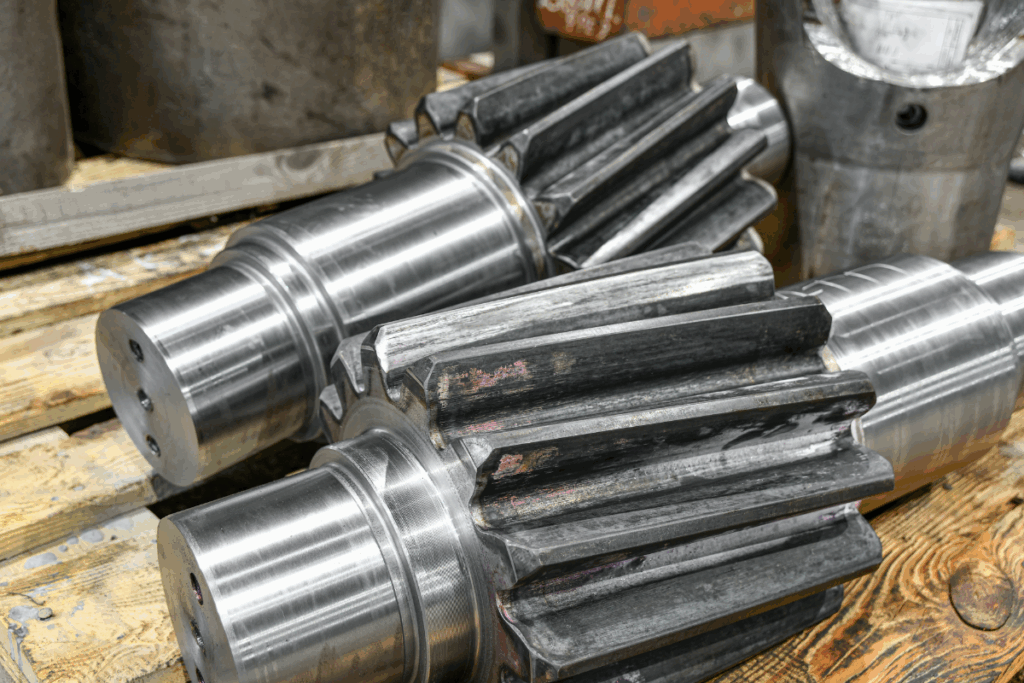Although the precision machining process sounds easy in theory – design, fabricate, and assemble – there are more intricate tasks in the project lifecycle than many people realize. In most cases, these tasks improve product quality so that the product can withstand the wear and tear of its particular application.
One process that enhances the strength of metal parts and components, thereby improving their quality and performance, is heat treatment. As its name suggests, heat treatment works by heating a metal or alloy to a high temperature and then letting it cool to harden the workpiece. It can be applied at various stages in the manufacturing process to change the metal’s properties, making it stronger, harder, more ductile, or more durable, depending on the demands of the final application.
The Standard Heat Treatment Process
As with the metalworking process, heat treatment sounds simple in theory. However, its application is heavily rooted in a scientific discipline known as metallurgy. Metallurgy is the study of the physical and chemical behaviour of metallic elements. In fabrication, it helps us determine the precise temperatures at which to heat and cool metals and how long each step of the process is applied to the workpiece. The combinations are virtually limitless and highly complicated, but thanks to metallurgy, we can ensure that the proper heat treatment process is used to create the required results.
Here’s how it works: once the treatment procedure is determined, the metal or aluminum is heated and held at a specific temperature, often as hot as 2400°F. During this period, known as “soak time,” the metal’s physical structure and properties change. The impact of the change depends on the temperature and the time the piece is exposed to the heat.
How the piece is cooled after soak time and the duration of the cooling also play a role in the final result. For example, the workpiece can be cooled slowly in a furnace or quickly in water, oil, or air.
Depending on the application of the workpiece, it might be ready for further processing after a single heat treatment, or multiple treatments might be necessary.
The perfect combination of heat temperature, soak time, cooling temperature, and cooling duration must be determined beforehand. Thanks to metallurgy, we can develop the appropriate approach for the best quality outcome.
Other Heat Treatment Options For Metal Objects
Several other heat treatment techniques may be applied to the standard heat treatment process during the automotive metal fabrication process to achieve the desired results, including:
Annealing
This process is typically used on steel and aluminum, as well as alloys such as copper, silver, and brass, to increase softness and improve ductility, making the material more workable and less likely to crack or fracture during shaping.
During annealing, the material is heated to a prescribed temperature, held until it transforms, and then slowly air-dried. The process is suitable for pieces that require extensive machining and forming to achieve the final result.
Hardening
If the piece requires strength and wear resistance, hardening is often the preferred technique. The process involves heating the metal to the desired temperature, transforming any defects into a complex solution. It is then rapidly cooled to create a strong, less malleable piece.
Hardening locks the piece’s carbon atoms into place, amplifying its hardness. However, some materials, such as iron-based alloys, can become brittle after hardening. Subsequent treatments, such as tempering, may be required to balance these properties.
Tempering
This process helps reduce the brittleness often associated with hardened workpieces. During tempering, the metal is reheated to a temperature lower than the transformation threshold, held, and then cooled once again. This alters the metal’s microstructure to strike a perfect balance between hardness and durability.
Tempering is critical when the piece’s final application requires reliability and performance under extreme stress and challenging conditions.
Quenching
Quenching is a rapid cooling technique that involves lowering the workpiece’s temperature by “quenching” it in water, oil, air, or other medium to alter its microstructure and improve hardness. Metallurgists determine the cooling rate and medium, as both influence the properties of the final piece.
This process is ideal for automotive metal fabrication parts such as gears and tool bits that require strength, rigidity and resistance to warping or cracking under stress during everyday use.
Induction Hardening
This process uses electrical induction to selectively heat materials. Engineers apply an alternating electromagnetic field that generates heat in the surface layer before rapidly cooling it. Induction hardening allows engineers to target specific areas for hardening with minimal distortion.
The result is a workpiece with a hardened exterior but softer inner core, perfect for crankshafts and gears where hard surface properties are crucial for optimal performance.
Why You Should Consider Heat Treatment For Your Metal Parts And Components
Heat-treated metals are often stronger and more durable than non-heat-treated metals, giving you longer-lasting, more reliable performance with better effectiveness and less need for maintenance.
Additionally, heat-treated parts and components also help prevent corrosion, virtually eliminating the need to replace expensive metal parts in the short term or as frequently.
If you have any questions about the benefits of heat treating, contact the engineering team at Kenona Industries, a division of Arrow Automotive. As a top automotive components supplier, we partner with local heat treat service providers on high-quality solutions that help our customers reach their production goals.
With our team in your corner, you’re assured of the best results for your precision machine projects every time. Get in touch with us when you’re ready to build!
Read More: Precision Machining’s Role In Automotive Parts Fabrication
Contact Arrow Automotive For A Quote On Your Next Design And Fabrication Project
Kenona Industries is a world-class supplier of automotive components to leading OEMs and Tier 1, 2, and 3 manufacturers. Discover what sets us apart by requesting a quote for your next project today!
